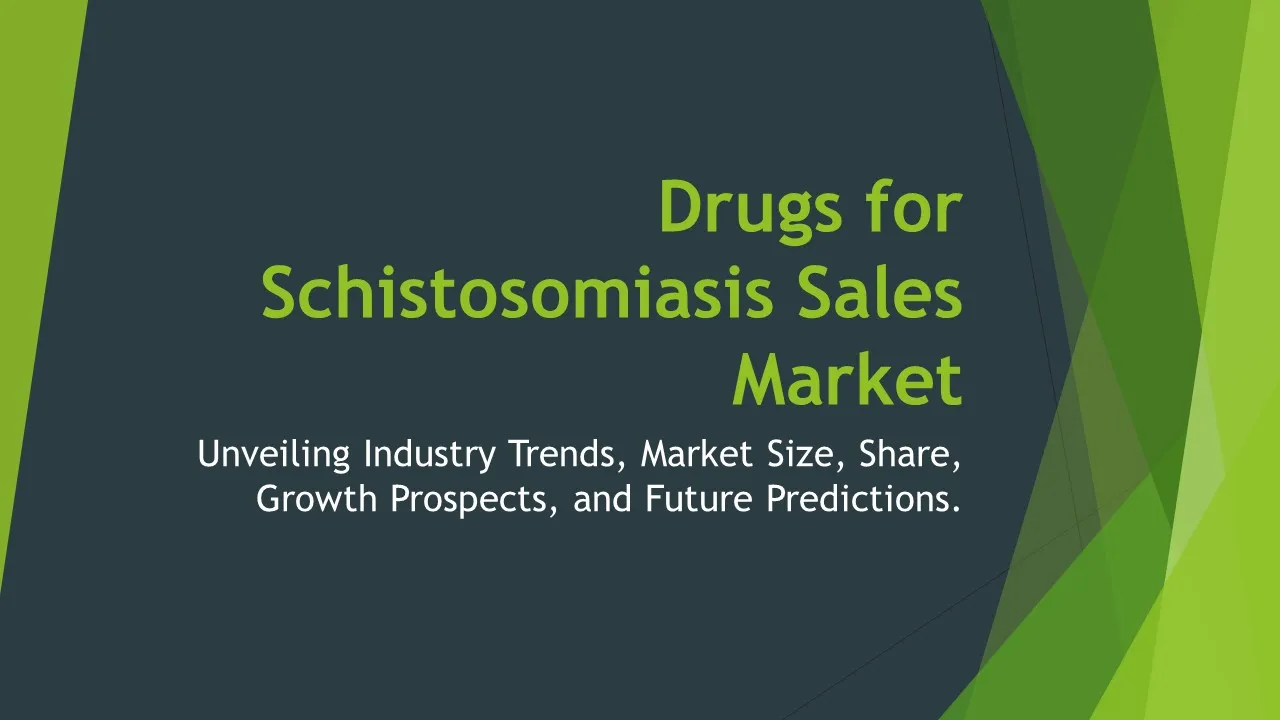Sterile Injectables
Sterile Injectables Market Segments - by Product Type (Small Molecules, Biologics), Application (Oncology, Infectious Diseases, Pain Management, Cardiovascular Diseases, Neurology), Distribution Channel (Hospital Pharmacies, Retail Pharmacies, Online Pharmacies), Ingredient Type (Generic, Branded), and Region (North America, Europe, Asia Pacific, Latin America, Middle East & Africa) - Global Industry Analysis, Growth, Share, Size, Trends, and Forecast 2025-2035
- Report Preview
- Table Of Content
- Segments
- Methodology
Sterile Injectables Market Outlook
The global sterile injectables market was valued at approximately USD 600 billion in 2023 and is projected to reach USD 850 billion by 2035, growing at a compound annual growth rate (CAGR) of around 6.7% during the forecast period. This growth is primarily driven by the rising incidence of chronic diseases such as diabetes and cancer, which necessitate the use of injectable medications for effective management. Furthermore, advancements in biologics and the increasing number of regulatory approvals for sterile injectable products are expected to bolster market growth. The growing preference for self-administration of injectable therapeutics among patients and the increasing healthcare expenditure globally are additional factors contributing to the market's expansion. In addition, the ongoing research and development efforts in the field of drug delivery systems are likely to result in innovative products, enhancing the growth prospects of the sterile injectables market.
Growth Factor of the Market
One of the primary growth factors driving the sterile injectables market is the increasing prevalence of chronic diseases, which require long-term management and often necessitate injectable therapies for effective treatment. As the global population ages, the incidence of conditions like diabetes, cardiovascular diseases, and various forms of cancer is on the rise, leading to a higher demand for sterile injectables. Additionally, the shift towards biologics, which are often administered via injection, is changing the landscape of drug development and delivery, thus propelling the market further. The ongoing technological advancements in formulation and delivery systems, including the development of prefilled syringes and auto-injectors, are enhancing patient compliance and convenience, thereby supporting market growth. Moreover, the surge in demand for vaccines, particularly due to the heightened focus on public health and preventive measures post-pandemic, is also a significant factor contributing to the market's expansion.
Key Highlights of the Market
- The sterile injectables market is expected to grow at a CAGR of 6.7% from 2025 to 2035.
- Oncology applications are projected to dominate the market due to the increasing incidence of cancer worldwide.
- North America is anticipated to hold the largest market share, driven by advanced healthcare infrastructure and high expenditure on pharmaceuticals.
- The rise in biologics is expected to significantly impact the growth of the sterile injectables segment.
- Online pharmacies are gaining traction, providing convenience and accessibility to patients seeking injectable medications.
By Product Type
Small Molecules:
Small molecules account for a significant share of the sterile injectables market, primarily due to their widespread use in various therapeutic areas, including pain management and infectious diseases. These drugs are often used for their low cost and the ability to be administered in a variety of healthcare settings. Moreover, the production processes for small molecule injectables are relatively well-established, making them more accessible for manufacturers. The increasing demand for generic small molecules is also contributing to market growth, as they provide affordable alternatives for patients without compromising treatment efficacy. As healthcare systems focus on cost-effective solutions, the small molecules segment is expected to witness continued growth over the forecast period.
Biologics:
The biologics segment of sterile injectables is experiencing significant growth, driven by the rising demand for targeted therapies and personalized medicine. Biologic drugs, which are derived from living organisms, are used in the treatment of complex diseases such as cancer, autoimmune disorders, and other chronic conditions. The high efficacy of biologics, coupled with an increase in regulatory approvals for these products, is propelling their adoption in clinical settings. Furthermore, innovations in biologic drug development, such as monoclonal antibodies and gene therapies, are expanding treatment options for patients, thus driving the growth of this segment. As the healthcare sector continues to shift towards biologics, the market for sterile injectables is poised for substantial expansion.
By Application
Oncology:
The oncology application segment is projected to experience robust growth within the sterile injectables market, largely due to the increasing incidence of cancer cases globally. Injectable therapies, including chemotherapy and targeted biologic agents, are essential components of cancer treatment regimens. The rising awareness of early detection and advancements in oncology research are leading to a higher demand for effective injectable therapies. Additionally, the growing number of clinical trials and FDA approvals for new oncology drugs is expected to further enhance this segment's growth. With ongoing innovations and the introduction of combination therapies in cancer treatment, the oncology application segment is expected to maintain a significant market share throughout the forecast period.
Infectious Diseases:
The segment of sterile injectables used for infectious diseases is also witnessing substantial growth, driven by the increasing prevalence of infectious diseases and the urgent need for effective treatment options. With the rising incidence of antibiotic-resistant infections, there is a growing emphasis on injectable therapies that can effectively combat these pathogens. Furthermore, the global response to health crises, such as the COVID-19 pandemic, has increased the focus on vaccination programs and therapeutics administered via injection. As public health initiatives emphasize the importance of timely and effective treatment for infectious diseases, the demand for sterile injectables in this application area is expected to grow steadily.
By Distribution Channel
Hospital Pharmacies:
Hospital pharmacies play a crucial role in the distribution of sterile injectables, providing healthcare facilities with access to a wide range of injectable medications. These pharmacies are integral to the efficient management of medication supply within hospitals, ensuring that healthcare professionals have immediate access to necessary drugs for patient care. The increasing number of hospital admissions and the rise in complex medical procedures necessitate a reliable supply of sterile injectables, driving growth in this distribution channel. Moreover, as hospitals adopt advanced inventory management systems and streamline their procurement processes, the role of hospital pharmacies in the sterile injectables market is expected to continue expanding.
Retail Pharmacies:
Retail pharmacies are another significant distribution channel for sterile injectables, facilitating access for patients who require medications outside of hospital settings. The rising trend of self-administration of injectables, particularly for chronic conditions such as diabetes, is driving the demand for sterile injectables in retail environments. Additionally, the convenience and accessibility provided by retail pharmacies contribute to patient compliance and continuity of care. The growth of pharmacy chains and the expansion of service offerings in retail settings are further enhancing the distribution of sterile injectables, allowing greater access to patients in the community.
By Ingredient Type
Generic:
The generic segment of sterile injectables is experiencing significant growth as healthcare systems worldwide seek cost-effective treatment options. Generic injectables offer the same therapeutic benefits as their branded counterparts but at a lower price, making them an attractive choice for both healthcare providers and patients. The increasing number of patent expirations for branded injectables is facilitating the entry of generic alternatives into the market, thereby enhancing competition and providing more options for patients. As healthcare costs continue to rise, the demand for generic sterile injectables is expected to increase, ensuring that this segment remains a key player in the market.
Branded:
The branded sterile injectables segment remains a vital part of the market due to the high efficacy and innovation associated with these products. Branded injectables are often the first choice for many healthcare providers, as they are associated with established clinical efficacy and safety profiles. The continuous investment in research and development by major pharmaceutical companies is leading to the introduction of novel branded therapies, particularly in areas such as oncology and biologics. Despite the challenges posed by the availability of generics, the branded segment is expected to maintain its significance in the sterile injectables market, driven by ongoing advancements in drug formulation and delivery technologies.
By Region
In the North America region, the sterile injectables market is anticipated to dominate, valued at approximately USD 300 billion in 2023 and expected to grow at a CAGR of 7.2% through 2035. The growth in this region can be attributed to the presence of advanced healthcare infrastructure, high levels of pharmaceutical expenditure, and a strong emphasis on research and development. The increasing prevalence of chronic diseases and the rising demand for biologics are further fueling market growth in North America. Additionally, the presence of key market players and ongoing innovations in drug delivery systems are anticipated to enhance competitive dynamics in this region.
In Europe, the sterile injectables market is projected to reach around USD 220 billion by 2035, with a CAGR of 6.5%. The region benefits from a well-established healthcare system and regulatory frameworks that support the development and approval of sterile injectable products. The rising incidence of chronic diseases, coupled with the growing demand for biologics and advanced therapies, is driving growth in the European sterile injectables market. Furthermore, the ongoing collaboration between pharmaceutical companies and research institutions is expected to lead to significant advancements in sterile injectable formulations, further contributing to the region's market growth.
Opportunities
The sterile injectables market presents numerous opportunities, particularly in the realm of innovation and technology. One of the most significant opportunities lies in the development of novel delivery systems, such as prefilled syringes and auto-injectors, which enhance patient convenience and adherence to treatment regimens. As patients become more engaged in their healthcare, the demand for user-friendly injectable options is expected to increase, providing manufacturers with a lucrative avenue for product development. Additionally, the rise in telehealth and remote patient monitoring is creating opportunities for pharmaceutical companies to explore innovative solutions that cater to the evolving needs of patients. This trend can lead to the development of injectable therapies that are more accessible and adaptable to home-based care settings, further expanding market reach.
Furthermore, the increasing focus on personalized medicine offers significant opportunities for growth in the sterile injectables market. As the understanding of individual patient responses to therapies evolves, pharmaceutical companies have the chance to develop tailored injectable treatments that address specific patient needs and conditions. This approach not only improves treatment outcomes but also fosters deeper patient-provider relationships. Moreover, the ongoing global health challenges, such as pandemics and the rise of antibiotic-resistant infections, are prompting governments and healthcare organizations to invest in vaccine and therapeutic development, further driving the demand for sterile injectables. These opportunities present a promising landscape for growth, innovation, and enhanced patient care in the sterile injectables market.
Threats
While the sterile injectables market exhibits strong growth potential, various threats can impede its progress. One of the most significant challenges is the increasing competition from generic and biosimilar products, which can lead to price erosion and reduced profit margins for established pharmaceutical companies. As patents for branded injectables expire, the influx of lower-cost alternatives can disrupt market dynamics and compel manufacturers to rethink their pricing strategies. This situation poses a threat to innovation, as companies may be less inclined to invest in research and development due to declining financial returns. Additionally, the regulatory landscape for sterile injectables is becoming increasingly stringent, leading to longer approval times and increased costs for compliance, which could pose barriers to market entry for smaller players.
Another critical threat to the sterile injectables market is the potential for supply chain disruptions, particularly in light of global events such as pandemics or geopolitical tensions. The reliance on specific raw materials and manufacturing facilities can result in vulnerabilities that impact the availability of injectable products. Moreover, quality control challenges and the risk of contamination during the manufacturing process can jeopardize product safety and efficacy, leading to recalls and loss of consumer trust. As the market continues to evolve, addressing these threats will be essential for ensuring the sustainability and growth of the sterile injectables market.
Competitor Outlook
- Pfizer Inc.
- Johnson & Johnson
- Roche Holding AG
- Novartis AG
- Amgen Inc.
- Sanofi S.A.
- Merck & Co., Inc.
- AbbVie Inc.
- Gilead Sciences, Inc.
- Bristol-Myers Squibb Company
- GlaxoSmithKline plc
- Teva Pharmaceutical Industries Ltd.
- Eli Lilly and Company
- AstraZeneca plc
- Biogen Inc.
The overall competitive landscape of the sterile injectables market is characterized by a mix of large multinational pharmaceutical companies and smaller, specialized firms. Major players, such as Pfizer and Roche, dominate the market due to their extensive portfolios of injectable products, strong research and development capabilities, and well-established distribution networks. These companies are continuously investing in innovative drug formulations and advanced delivery systems to maintain their competitive edge. Furthermore, mergers and acquisitions are common as larger firms look to enhance their market presence and expand their product offerings through strategic partnerships with smaller biotech companies or startups focused on niche areas of drug development.
Additionally, the competitive landscape is influenced by the growing trend of biosimilars, as companies like Amgen and AbbVie are introducing biosimilar versions of existing biologics to capture market share from branded products. The entry of these biosimilars into the market is reshaping the dynamics of competition, compelling traditional players to adapt their strategies and focus on value-added services, such as patient support programs and educational initiatives for healthcare providers. Furthermore, the emphasis on personalized medicine is fostering collaboration between pharmaceutical companies and research institutions, which can lead to the development of innovative sterile injectables that meet specific patient needs.
Some major companies in the sterile injectables market, such as Johnson & Johnson and Sanofi, have established themselves as leaders through their commitment to research and development in the realm of injectable therapies. Johnson & Johnson, for instance, has made significant investments in its oncology portfolio, focusing on novel therapies that leverage advanced drug delivery technologies. Sanofi, on the other hand, has been actively expanding its offerings in biologics and vaccines, seizing opportunities to address unmet medical needs in various therapeutic areas. As the market continues to evolve, these companies are likely to remain at the forefront, driving innovation and contributing to the growth of the sterile injectables market.
1 Appendix
- 1.1 List of Tables
- 1.2 List of Figures
2 Introduction
- 2.1 Market Definition
- 2.2 Scope of the Report
- 2.3 Study Assumptions
- 2.4 Base Currency & Forecast Periods
3 Market Dynamics
- 3.1 Market Growth Factors
- 3.2 Economic & Global Events
- 3.3 Innovation Trends
- 3.4 Supply Chain Analysis
4 Consumer Behavior
- 4.1 Market Trends
- 4.2 Pricing Analysis
- 4.3 Buyer Insights
5 Key Player Profiles
- 5.1 Amgen Inc.
- 5.1.1 Business Overview
- 5.1.2 Products & Services
- 5.1.3 Financials
- 5.1.4 Recent Developments
- 5.1.5 SWOT Analysis
- 5.2 AbbVie Inc.
- 5.2.1 Business Overview
- 5.2.2 Products & Services
- 5.2.3 Financials
- 5.2.4 Recent Developments
- 5.2.5 SWOT Analysis
- 5.3 Biogen Inc.
- 5.3.1 Business Overview
- 5.3.2 Products & Services
- 5.3.3 Financials
- 5.3.4 Recent Developments
- 5.3.5 SWOT Analysis
- 5.4 Novartis AG
- 5.4.1 Business Overview
- 5.4.2 Products & Services
- 5.4.3 Financials
- 5.4.4 Recent Developments
- 5.4.5 SWOT Analysis
- 5.5 Pfizer Inc.
- 5.5.1 Business Overview
- 5.5.2 Products & Services
- 5.5.3 Financials
- 5.5.4 Recent Developments
- 5.5.5 SWOT Analysis
- 5.6 Sanofi S.A.
- 5.6.1 Business Overview
- 5.6.2 Products & Services
- 5.6.3 Financials
- 5.6.4 Recent Developments
- 5.6.5 SWOT Analysis
- 5.7 AstraZeneca plc
- 5.7.1 Business Overview
- 5.7.2 Products & Services
- 5.7.3 Financials
- 5.7.4 Recent Developments
- 5.7.5 SWOT Analysis
- 5.8 Roche Holding AG
- 5.8.1 Business Overview
- 5.8.2 Products & Services
- 5.8.3 Financials
- 5.8.4 Recent Developments
- 5.8.5 SWOT Analysis
- 5.9 Johnson & Johnson
- 5.9.1 Business Overview
- 5.9.2 Products & Services
- 5.9.3 Financials
- 5.9.4 Recent Developments
- 5.9.5 SWOT Analysis
- 5.10 Merck & Co., Inc.
- 5.10.1 Business Overview
- 5.10.2 Products & Services
- 5.10.3 Financials
- 5.10.4 Recent Developments
- 5.10.5 SWOT Analysis
- 5.11 GlaxoSmithKline plc
- 5.11.1 Business Overview
- 5.11.2 Products & Services
- 5.11.3 Financials
- 5.11.4 Recent Developments
- 5.11.5 SWOT Analysis
- 5.12 Eli Lilly and Company
- 5.12.1 Business Overview
- 5.12.2 Products & Services
- 5.12.3 Financials
- 5.12.4 Recent Developments
- 5.12.5 SWOT Analysis
- 5.13 Gilead Sciences, Inc.
- 5.13.1 Business Overview
- 5.13.2 Products & Services
- 5.13.3 Financials
- 5.13.4 Recent Developments
- 5.13.5 SWOT Analysis
- 5.14 Bristol-Myers Squibb Company
- 5.14.1 Business Overview
- 5.14.2 Products & Services
- 5.14.3 Financials
- 5.14.4 Recent Developments
- 5.14.5 SWOT Analysis
- 5.15 Teva Pharmaceutical Industries Ltd.
- 5.15.1 Business Overview
- 5.15.2 Products & Services
- 5.15.3 Financials
- 5.15.4 Recent Developments
- 5.15.5 SWOT Analysis
- 5.1 Amgen Inc.
6 Market Segmentation
- 6.1 Sterile Injectables Market, By Application
- 6.1.1 Oncology
- 6.1.2 Infectious Diseases
- 6.1.3 Pain Management
- 6.1.4 Cardiovascular Diseases
- 6.1.5 Neurology
- 6.2 Sterile Injectables Market, By Product Type
- 6.2.1 Small Molecules
- 6.2.2 Biologics
- 6.3 Sterile Injectables Market, By Ingredient Type
- 6.3.1 Generic
- 6.3.2 Branded
- 6.4 Sterile Injectables Market, By Distribution Channel
- 6.4.1 Hospital Pharmacies
- 6.4.2 Retail Pharmacies
- 6.4.3 Online Pharmacies
- 6.1 Sterile Injectables Market, By Application
7 Competitive Analysis
- 7.1 Key Player Comparison
- 7.2 Market Share Analysis
- 7.3 Investment Trends
- 7.4 SWOT Analysis
8 Research Methodology
- 8.1 Analysis Design
- 8.2 Research Phases
- 8.3 Study Timeline
9 Future Market Outlook
- 9.1 Growth Forecast
- 9.2 Market Evolution
10 Geographical Overview
- 10.1 Europe - Market Analysis
- 10.1.1 By Country
- 10.1.1.1 UK
- 10.1.1.2 France
- 10.1.1.3 Germany
- 10.1.1.4 Spain
- 10.1.1.5 Italy
- 10.1.1 By Country
- 10.2 Asia Pacific - Market Analysis
- 10.2.1 By Country
- 10.2.1.1 India
- 10.2.1.2 China
- 10.2.1.3 Japan
- 10.2.1.4 South Korea
- 10.2.1 By Country
- 10.3 Latin America - Market Analysis
- 10.3.1 By Country
- 10.3.1.1 Brazil
- 10.3.1.2 Argentina
- 10.3.1.3 Mexico
- 10.3.1 By Country
- 10.4 North America - Market Analysis
- 10.4.1 By Country
- 10.4.1.1 USA
- 10.4.1.2 Canada
- 10.4.1 By Country
- 10.5 Sterile Injectables Market by Region
- 10.6 Middle East & Africa - Market Analysis
- 10.6.1 By Country
- 10.6.1.1 Middle East
- 10.6.1.2 Africa
- 10.6.1 By Country
- 10.1 Europe - Market Analysis
11 Global Economic Factors
- 11.1 Inflation Impact
- 11.2 Trade Policies
12 Technology & Innovation
- 12.1 Emerging Technologies
- 12.2 AI & Digital Trends
- 12.3 Patent Research
13 Investment & Market Growth
- 13.1 Funding Trends
- 13.2 Future Market Projections
14 Market Overview & Key Insights
- 14.1 Executive Summary
- 14.2 Key Trends
- 14.3 Market Challenges
- 14.4 Regulatory Landscape
Segments Analyzed in the Report
The global Sterile Injectables market is categorized based on
By Product Type
- Small Molecules
- Biologics
By Application
- Oncology
- Infectious Diseases
- Pain Management
- Cardiovascular Diseases
- Neurology
By Distribution Channel
- Hospital Pharmacies
- Retail Pharmacies
- Online Pharmacies
By Ingredient Type
- Generic
- Branded
By Region
- North America
- Europe
- Asia Pacific
- Latin America
- Middle East & Africa
Key Players
- Pfizer Inc.
- Johnson & Johnson
- Roche Holding AG
- Novartis AG
- Amgen Inc.
- Sanofi S.A.
- Merck & Co., Inc.
- AbbVie Inc.
- Gilead Sciences, Inc.
- Bristol-Myers Squibb Company
- GlaxoSmithKline plc
- Teva Pharmaceutical Industries Ltd.
- Eli Lilly and Company
- AstraZeneca plc
- Biogen Inc.
- Publish Date : Jan 21 ,2025
- Report ID : PH-65732
- No. Of Pages : 100
- Format : |
- Ratings : 4.5 (110 Reviews)









